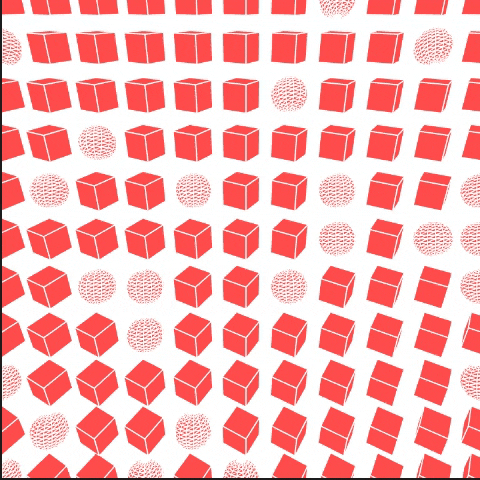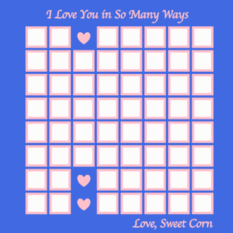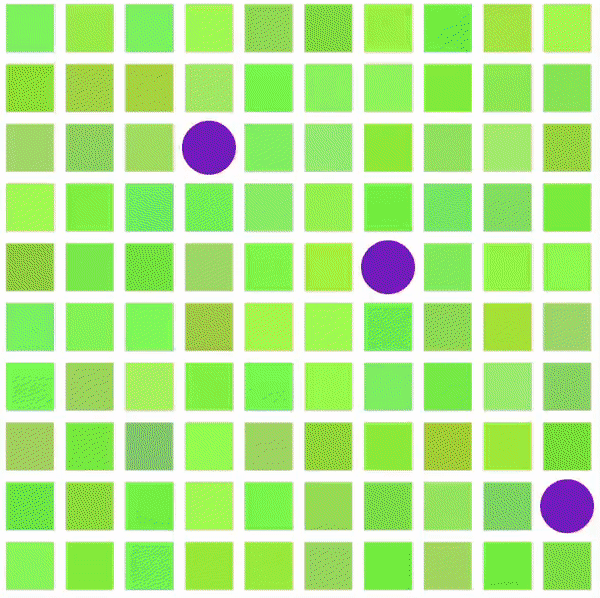Student Area
marimonda – reading01 ( 10,000 Bowls of Oatmeal Problem )
Kate Compton coined the “10,000 Bowls of Oatmeal Problem” as a way to describe a common issue in generative artwork, differentiation between the different artifacts generated.
It is an interesting problem because it proposes to us the fact that while two objects may be mathematically different, these differences may not be perceivable at all for the user/player. In general, there will be cases in which different levels of perceptual differentiation are needed when automatically generating objects.
For instance, assume you are trying to make a new race of monster from a set of attributes (some will have a tail, some wont, some will have legs and some might have wings), if you have a large number of varied parts to construct a monster, it is really likely that each monster you get might be completely different, with every single iteration creating a new race of monster.
But this could come with its own set of disadvantages, assuming you want an entire colony of monsters of the same kind, maybe this specific type of monster only has variations in eye color and tooth shape resulting in hundreds of monsters that could look similar but retain individual characteristics at a closer glace. I think in general, intention and context will determine the mutability of the object you are trying to generate and this is something that is at the core of what Kate Compton was trying to describe, you need to know what are the good attributes and the bad attributes (and the memorable attributes!) of what you are trying to accomplish when generating an object.
Using meaningful symbols and identifiable perceptual differences is a great way to avoid the “10,000 Bowls of Oatmeal Problem“, add various degrees of clear mutability when needed (but also know when not to go overboard!).
mokka- Looking Outwards 01
Mintabox is a user-collaborative, generative website created by the artist Joe Hedges. His intention with this website was to explore the idea of information stored within the internet space or as he calls “the information page”. Any user is able to generate a digital box that contains a user-submitted text and/or image. Hedges created this system using PHP, CSS, HTML, Javascript, digital photography, oil painting while directly observing and utilizing digital photography and image manipulation.

What really drew me in about this project is the way it is so simple, yet so flavorful and thoughtful. It acts as both a time capsule and a simple platform for people around the globe to interact with each other by sending messages that are not even directed at them but are meant for them at the same time(and in form of a 2D digital box). Something so small and odd can easily bring a smile to my face such as this and I am here for it. You can choose the pixel size, color, size, glitch/no glitch effect on the box as you can see below with the various display of boxes.
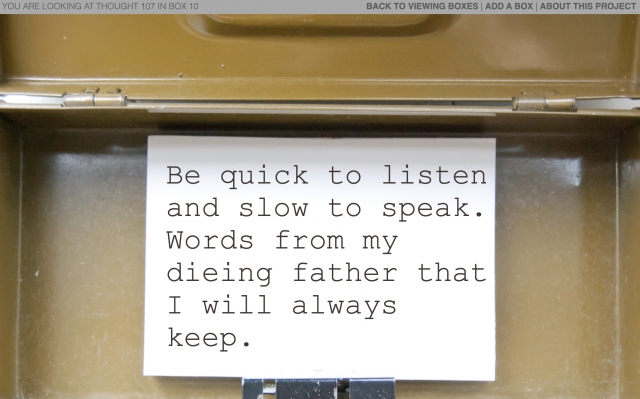
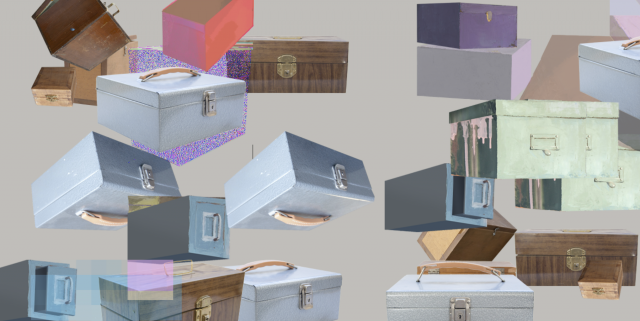
The process of having to choose the character of the box seems like such a fun way to somehow personalize the way that you enter yourself into this net space along with many others.
This website has been occupied by many different users since the year 2012 and is still a place where people visit time to time to leave messages even today.
Watch Joe go through different time boxes:
marimonda – Map
About my imaginary map:
Something that is fascinating to me is the idea of fabricating false information to create a realistic person based on specific facts of information, such as names, addresses, coordinates and other identifiers.
This is what I came up with: (LINK TO PROJECT)

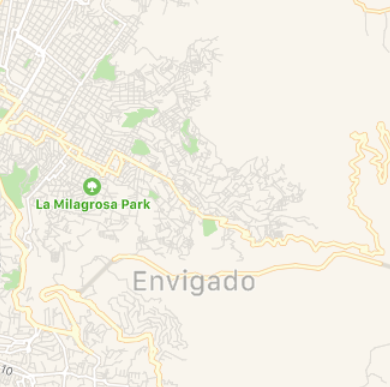
Technical process:
To create this, I tried to emulate the randomness of city streets by iterating through alternating paths with different cases determined by chance so that the structure of the city is erratic, yet slightly linear and organized (much like the Andean city in the image above!). These paths all start at at the origin of where the user clicks, this is also the point that marks the specific location of the constructed person. I also created banks of first names, last names, cities (made up for prefixes and suffixes) to create their random identifiers.
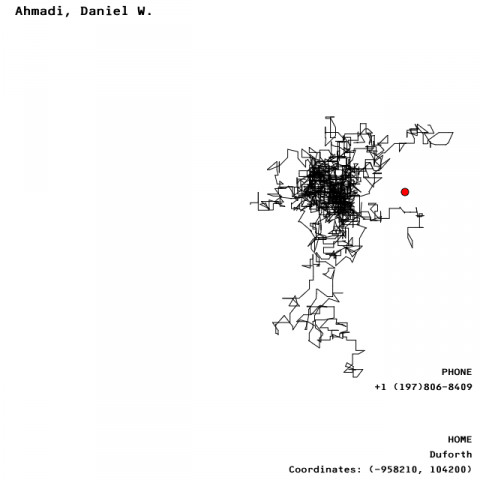
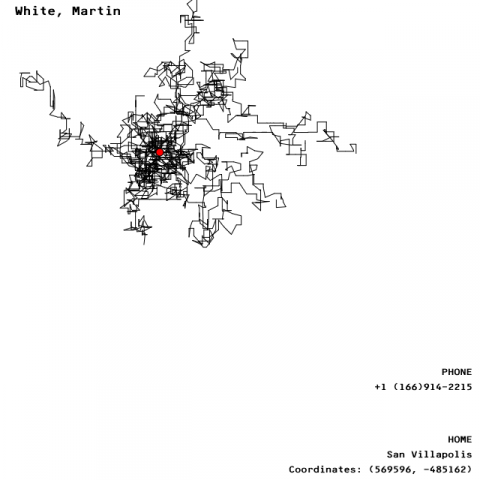
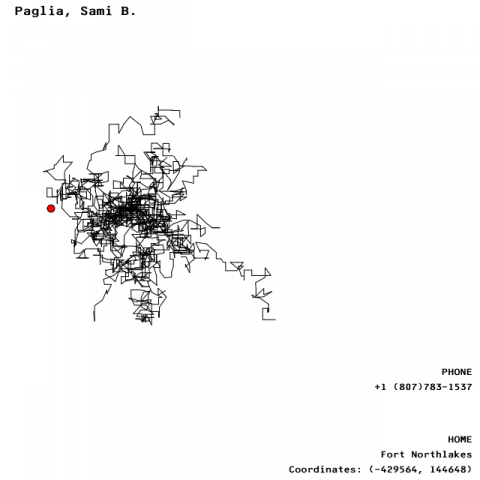
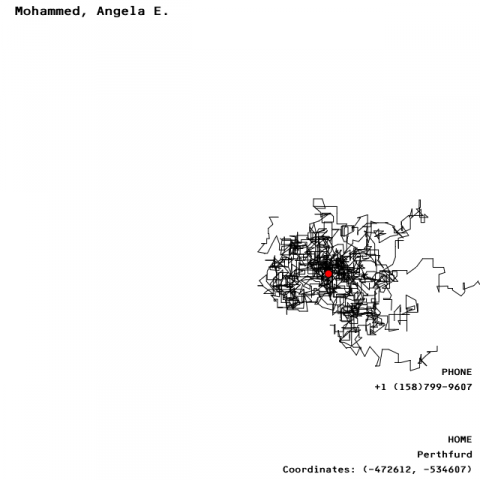
sweetcorn-IterationExercise
yanwen-lookingoutwards01
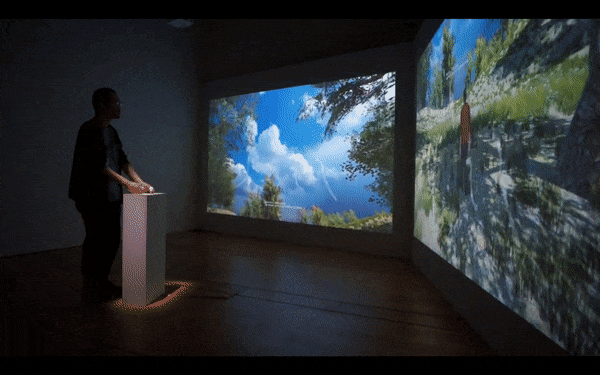
Something Similar to Me / About Seeing Things by Akihiko Taniguchi is an interactive essay on identity in the digital age. The work presents a digital space with 3D scannings of environment fragments from Taniguchi’s daily observations, and invits viewers to navigate around the created world by controlling a 3D scanning of the artist himself.
What I love about the work is that Taniguchi recontextualizes ordinary objects in physical spaces through digital processes, and constructs a new environment for reflecting upon the identities of these objects in digital space. The artist created both the 3D experience and the writing used in the piece. Nothing about the process of development was presented but I think the work is made with a combination of “off-the-shelf” software (maybe using 3D game engine) and custom scripts for the interactions and hardware setups.
Taniguchi listed domestic by Mary Flanagan and Legible City by Jeffrey Shaw as inspirations behind his work.
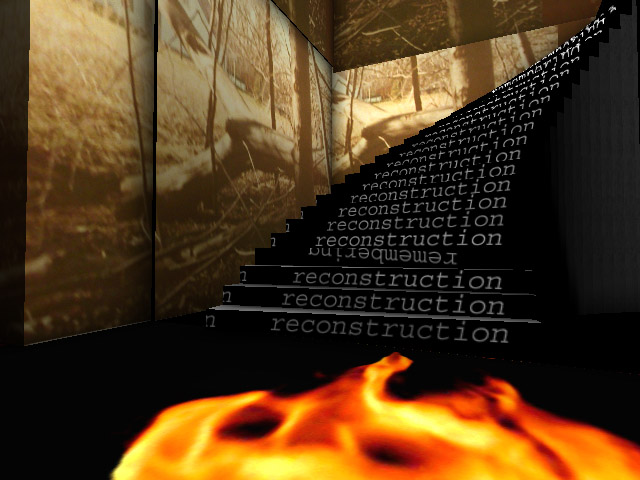
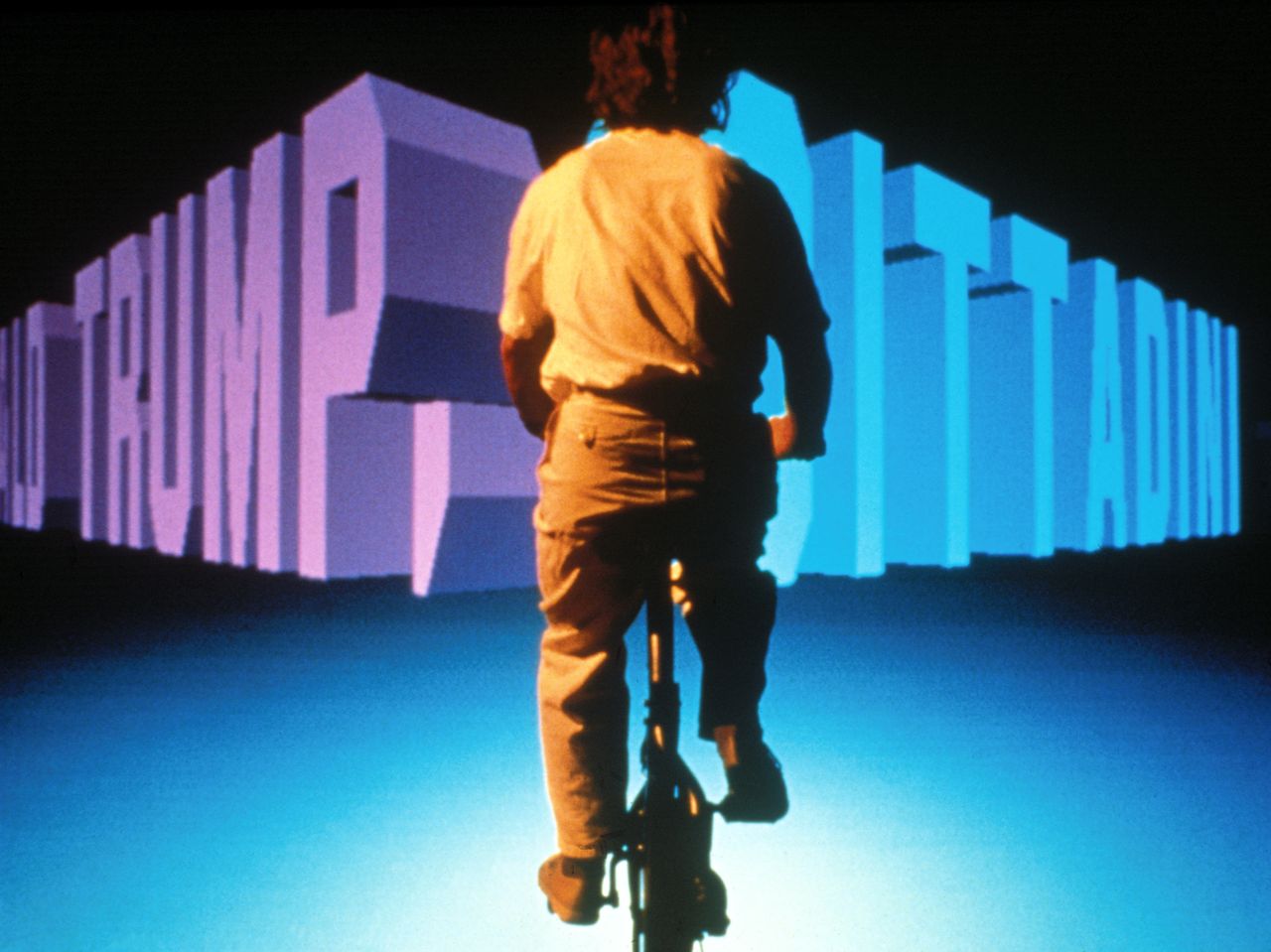
Both works deal with creating 3D digital space and finding the connection between virtual and real world spaces. The most intriguing part of the project, which also could point to future opportunities, is its selection of mundane objects and the usage of direct presentation of the original forms (without reimagining or modeling via digital methods).
It also reminds me of how AR has been incorporated into online retailing experiences. How will we present everyday objects digitally in the near future?
Here’s the video abstract of Taniguchi’s work:
Axol-01-Reading-OatmealProblem
Kate Compton’s idea of the “10,000 Bowls of Oatmeal” problem describes the difference between mathematical uniqueness and perceptual uniqueness, and in my opinion, how our human perception of aesthetics and uniqueness is completely subjective.
Humans identifies objects by their key characteristics, for example, a bird by a feathered egg-laying animal that walks on two legs; and we differentiate different types of birds by what we consider to be their significant characteristics: their color, their size, their beak shape, etc. We do not identify them via their smell, or that one of them have an extra feather on its tail(though that maybe significant to birds) — these details are not what we look for when we perceive a bird. Hence, only changes on the significant characteristics ends up influencing our perception, and contributing to the perceptual uniqueness.
Thus as the article’s proposed creative process for procedural art suggests, it’s important to identify these key characteristics of whatever you’re trying to generate, and know your audience’s expectations. The article also touches on how associations and context could contribute to the authentic-ness of the object, and that reminds me of the Bouba/kiki effect, where our associations of shapes/sounds/color/etc is constantly affecting our perception of the world– and we should use them to our advantage when creating work.
Toad2-reading01
10,000 Bowls of Oatmeal Problem
The 10,000 bowls of Oatmeal problem examines a feature of generative art, the perceptual uniqueness – the amount of distinction between artifacts and perceptual differentiation – the ability to perceive two artifacts as different.
The lack of perceptual uniqueness does not necessarily hurt a project since depending upon the context a lack of perceptual uniqueness among a collection of artifacts can benefit or hurt the collection. For example, a game focused upon collecting an infinite number of creatures would be harmed by a lack of perceptual uniqueness since the game’s main draw is the infinite number of unique creatures. While the promised variety theoretically exists, but since the user can’t quickly distinguish said variety, it doesn’t really exist. On the other hand, procedurally generated crowd that wanders the background would benefit from a lack of perceptual uniqueness and merely having perceptual differentiation. The slight variation between each character would provide subtly uniqueness to each background character without causing them to stand out.
In order to increase perceptual uniqueness, the author recommends we generate objects that each have emphasized characteristics humans can easily distinguish.
Toad2 – IterationExercise
marimonda – LookingOutwards-01
 ‘My Boyfriend Came Back from the War’ was one of the first pieces of real net art that I ever encountered. It was a piece that introduced me to the idea of using net art to convey abstract experiences where each page could help convey a narrative, it is one of the reasons why I find this piece so fascinating.
‘My Boyfriend Came Back from the War’ was one of the first pieces of real net art that I ever encountered. It was a piece that introduced me to the idea of using net art to convey abstract experiences where each page could help convey a narrative, it is one of the reasons why I find this piece so fascinating.
This piece was made in 1996 by Olia Lialina as a hypertext non-linear narrative, she describes this work as a sort of “net film”. The story centers around a couple who were separated during a war, neither the couple nor the war are named, the piece it self focuses a lot more on the emotion of a disjointed narrative. ‘My Boyfriend Came Back from the War’ was made during the early web (back in the netscape days) and didn’t use much more than images, links and text. However it has a massive legacy in how it impacted net art, many artists making various remixes and adaptations of it.
